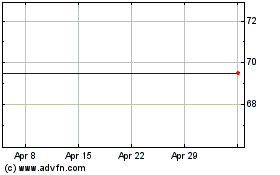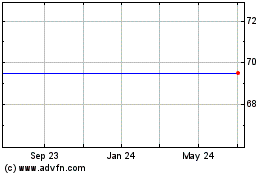DARPA Selects Ball Aerospace for XNAV Interstellar Navigation Program
November 03 2005 - 2:24PM
PR Newswire (US)
BROOMFIELD, Colo., Nov. 3 /PRNewswire-FirstCall/ -- The Defense
Advanced Research Projects Agency (DARPA) has selected Ball
Aerospace & Technologies Corp. to lead the Phase I development
of its X-ray Source-based Navigation for Autonomous Position
Determination (XNAV) program. XNAV is designed to provide precision
navigation of vehicles traveling in deep space within hundreds of
meters. It is also designed to provide a GPS back-up for space
systems such as low-earth orbiting spacecraft. XNAV's Phase I is
expected to determine the feasibility and viability of the use of
celestial sources, including pulsars, for position, attitude and
time determination of both deep space and spacecraft in low-earth
orbit. Ball Aerospace will conduct research and development of an
autonomous position, attitude and time determination system using
celestial sources in the X-ray band of the electromagnetic
spectrum. The associate contractors selected by DARPA to join Ball
Aerospace in Phase I include Los Alamos National Laboratory (LANL),
the Johns Hopkins University's Applied Physics Laboratory (APL) and
the National Institute of Standards and Technology (NIST). "We have
a great collaborative team with LANL, APL and NIST," says Mike
Cerneck, vice-president and general manager of Ball Aerospace
defense operations group. "XNAV is a perfect match with Ball
Aerospace's pointing and tracking technology base and fits our
strategy of developing, demonstrating and deploying advanced
technology systems." Ball Corporation (NYSE:BLL) is a supplier of
metal and plastic packaging products, primarily for the beverage
and food industries. The company also owns Ball Aerospace &
Technologies Corp., which develops sensors, spacecraft, systems and
components for government and commercial markets. Ball Corporation
employs more than 13,500 people and reported 2004 sales of $5.4
billion. Forward-Looking Statements The information in this news
release contains "forward-looking" statements and other statements
concerning future events and financial performance. Words such as
"expects," "anticipates," "estimates," and variations of same and
similar expressions are intended to identify forward-looking
statements. Forward-looking statements are subject to risks and
uncertainties which could cause actual results to differ materially
from those expressed or implied. The company undertakes no
obligation to publicly update or revise any forward-looking
statements, whether as a result of new information, future events
or otherwise. Key risks and uncertainties are summarized in the
company's filings with the Securities and Exchange Commission,
especially in Exhibit 99.2 in the most recent Form 10-K. These
filings are available at our Web site and at http://www.sec.gov/.
Factors that might affect our packaging segments include
fluctuation in consumer and customer demand; availability and cost
of raw materials, including due to the effects of hurricanes
Katrina and Rita, as well as recent significant increases in resin,
steel, aluminum and energy costs, and the ability to pass such
increases on to customers; competitive packaging availability,
pricing and substitution; changes in climate and weather; fruit,
vegetable and fishing yields; industry productive capacity and
competitive activity; failure to achieve anticipated productivity
improvements or production cost reductions, including those
associated with our beverage can end project; the German mandatory
deposit or other restrictive packaging laws; changes in major
customer or supplier contracts or loss of a major customer or
supplier; international business risks, including foreign exchange
rates, tax rates and activities of foreign subsidiaries; and the
effect of LIFO accounting on earnings. Factors that might affect
aerospace segment include: funding, authorization and availability
of government contracts and the nature and continuation of those
contracts; and technical uncertainty associated with segment
contracts. Factors that could affect the company as a whole include
those listed plus: acquisitions, joint ventures or divestitures;
regulatory action or laws including tax, environmental and
workplace safety; governmental investigations; goodwill impairment;
antitrust and other litigation; strikes; boycotts; labor cost
changes; rates of return projected and earned on assets of the
company's defined benefit retirement plans; reduced cash flow;
interest rates affecting our debt; and changes to unaudited results
due to statutory audits or management's evaluation of the company's
internal control over financial reporting. DATASOURCE: Ball
Aerospace & Technologies Corp. CONTACT: Emilia Reed of Ball
Aerospace & Technologies Corp., +1-303-533-6059,
Copyright
Ball (NYSE:BLL)
Historical Stock Chart
From Jun 2024 to Jul 2024

Ball (NYSE:BLL)
Historical Stock Chart
From Jul 2023 to Jul 2024
